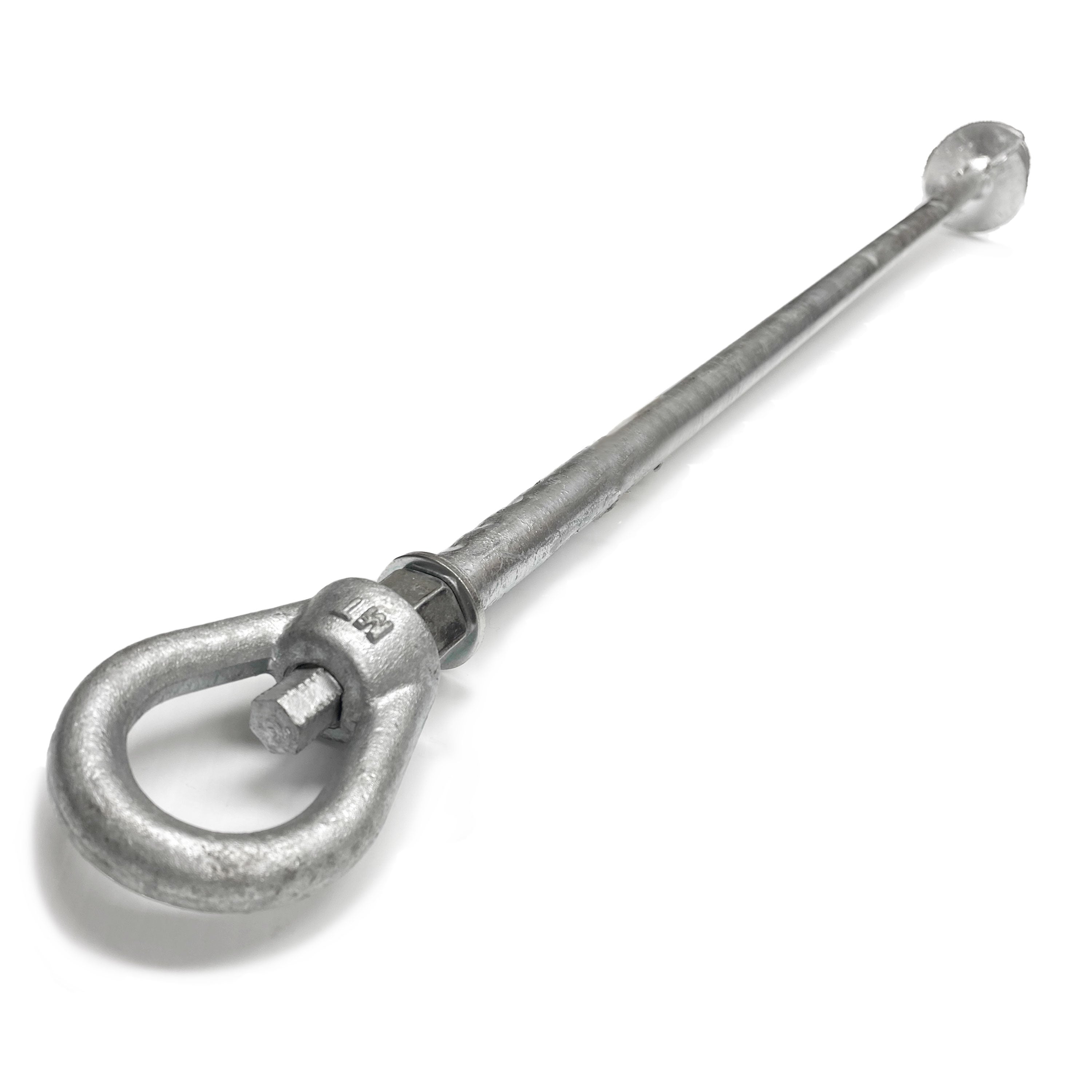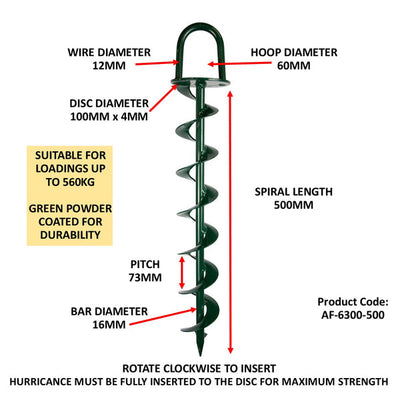The Best Ways to Install a Ground Anchor for Optimal Performance
Understand Why Ground Support Is Essential for Security and Toughness
Ground supports are a vital part in construction, providing crucial support and security for various structures. Their capacity to move loads efficiently to the ground not just boosts architectural honesty but also plays a substantial duty in mitigating risks linked with environmental elements, such as unpredictable dirt and seismic task. Recognizing the various kinds and applications of ground supports can brighten their indispensable duty in ensuring safety and security and longevity. Nevertheless, the intricacies of their installment and the benefits they provide might not be promptly obvious, motivating further exploration into this crucial topic.
Role of Ground Supports in Building And Construction
Ground anchors play a crucial role in building and construction by providing important support and stability to frameworks. These devices are created to move lots from a framework to the ground, making sure that structures and other infrastructures remain protected under numerous conditions. Ground anchors are specifically vital in scenarios where soil conditions are unstable or where there is a threat of side activity, such as on slopes or near bodies of water.
The setup of ground supports includes boring into the earth to reach secure soil or bedrock, where the supports can be safely secured. This procedure not only boosts the structural stability of a job but additionally alleviates the risks connected with dirt erosion and moving. Furthermore, ground supports can be employed in short-lived structures, such as construction websites, where they offer needed stabilization during the building procedure.
Ground anchors additionally add to the durability and sturdiness of frameworks by lowering the chance of negotiation and failure. Ground Anchor. By successfully distributing and taking care of loads, these necessary elements are essential in keeping safety and security criteria and ensuring the integrity of various building tasks. Generally, the value of ground supports in construction can not be overstated, as they are integral to effective engineering methods
Types of Ground Anchors


While many sorts of ground anchors exist, each serves particular applications and problems within building and construction tasks. The most common kinds include mechanical anchors, grouted supports, and driven supports.
Mechanical anchors, such as development anchors, make use of a mechanical activity to secure the support within the substratum - Ground Anchor. These are frequently utilized in light-weight applications, like protecting fixtures to masonry or concrete
Grouted anchors, on the other hand, involve piercing a hole, placing a steel rod or cable television, and after that loading the annular area with cement. This technique appropriates for high-load situations, offering improved stability and resistance to dynamic forces typically found in heavy building and construction.
Driven anchors are usually mounted by driving a steel rod or pipe into the ground, making them suitable for temporary applications such as safeguarding scaffolding or formwork. When no much longer needed., they are fast to install and can be eliminated quickly.
Various other specialized anchoring systems include helical supports, which are screw-like gadgets utilized in numerous dirt problems, and deadman supports, which rely upon the weight of a buried item to provide stability. Each sort of ground anchor is created to meet certain engineering requirements, guaranteeing safety and security and architectural honesty.
Advantages of Using Ground Supports
The benefits of utilizing Related Site ground supports in building jobs are substantial, enhancing both safety and security and architectural performance. Ground anchors offer important resistance versus lateral pressures, such as soil motion, wind loads, and seismic task. This resistance assists preserve the stability of structures, protecting against possible failures that can result in expensive repair work or unsafe circumstances.
Additionally, ground anchors help with the reliable transfer of lots from frameworks to the bordering dirt, making certain a balanced circulation of weight. This lots transfer decreases the danger of shifting or clearing up, which can compromise the stability of a structure gradually. By using ground supports, designers can also create much more reliable styles, as they allow for slimmer structural elements while preserving safety criteria.
In addition, ground anchors are functional and adaptable to different dirt conditions and job needs. Their installation can frequently be completed rapidly and with very little disturbance to the surrounding atmosphere, making them an effective option for several construction applications. Eventually, making use of ground supports boosts not just the durability of frameworks however also adds to a safer working environment for construction personnel and future owners.
Usual Applications and Makes Use Of
Countless construction projects leverage ground supports for their performance in enhancing stability and safety. These functional parts are typically utilized in various applications across the construction and civil design sectors. One common application is in maintaining walls, where ground anchors give the necessary assistance to prevent dirt motion and keep structural stability.
Furthermore, ground supports are vital in protecting short-lived structures, such as scaffolding and shoring systems, ensuring they stay secure during construction activities. In the realm of structure assistance, they are utilized to reinforce existing frameworks, especially in areas prone to ground settlement or shifting soil conditions.
Ground supports additionally locate comprehensive usage in slope stabilization jobs, where they assist minimize landslide threats by securing the dirt to stable rock formations. An additional substantial application remains in the installment of wind turbines, where they secure the base against lateral forces generated by wind, making sure operational security and long life.
Furthermore, ground supports are employed in tunneling projects to stabilize the bordering ground during excavation. Their varied applications underline the important duty ground supports play in keeping security and longevity in different construction circumstances.
Setup Best Practices
Effective application of ground supports Related Site in various construction projects rests on effective setup techniques. Proper installment is essential to ensure the anchors meet their desired purpose and maintain structural honesty with time. Key ideal methods include detailed site analysis, which includes examining dirt conditions, lots requirements, and ecological aspects that may influence anchor efficiency.
Prior to installment, it is important to choose the proper kind of ground support based upon the details application and dirt characteristics. Utilizing premium products and adhering to manufacturer specs will certainly boost the anchor's resilience and performance. Throughout setup, guarantee that the support is put at the proper angle and depth, as these variables significantly impact load-bearing capacity.
Regular evaluations are additionally recommended to keep track of the problem of the supports and bordering soil. By following these setup finest techniques, designers and contractors can improve the security and longevity of structures reliant on ground anchors.

Verdict
In summary, ground anchors are crucial elements in construction, significantly improving safety and security and resilience. The varied types and advantages of ground supports, combined with their wide-ranging applications, highlight their importance in both short-term and permanent frameworks.
The installation of ground anchors involves boring right into the earth to reach secure soil or bedrock, where the anchors can be safely secured.The advantages of making use of ground supports in building tasks are substantial, More Bonuses boosting both safety and security and structural performance.Many building and construction projects take advantage of ground supports for their efficiency in improving stability and safety and security.Successful application of ground supports in various building and construction projects hinges on efficient setup practices.In summary, ground anchors are important components in building and construction, significantly boosting safety and resilience.